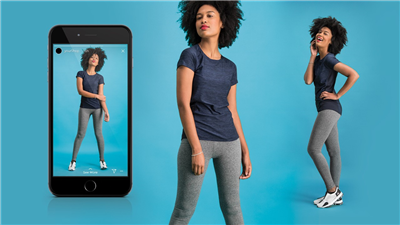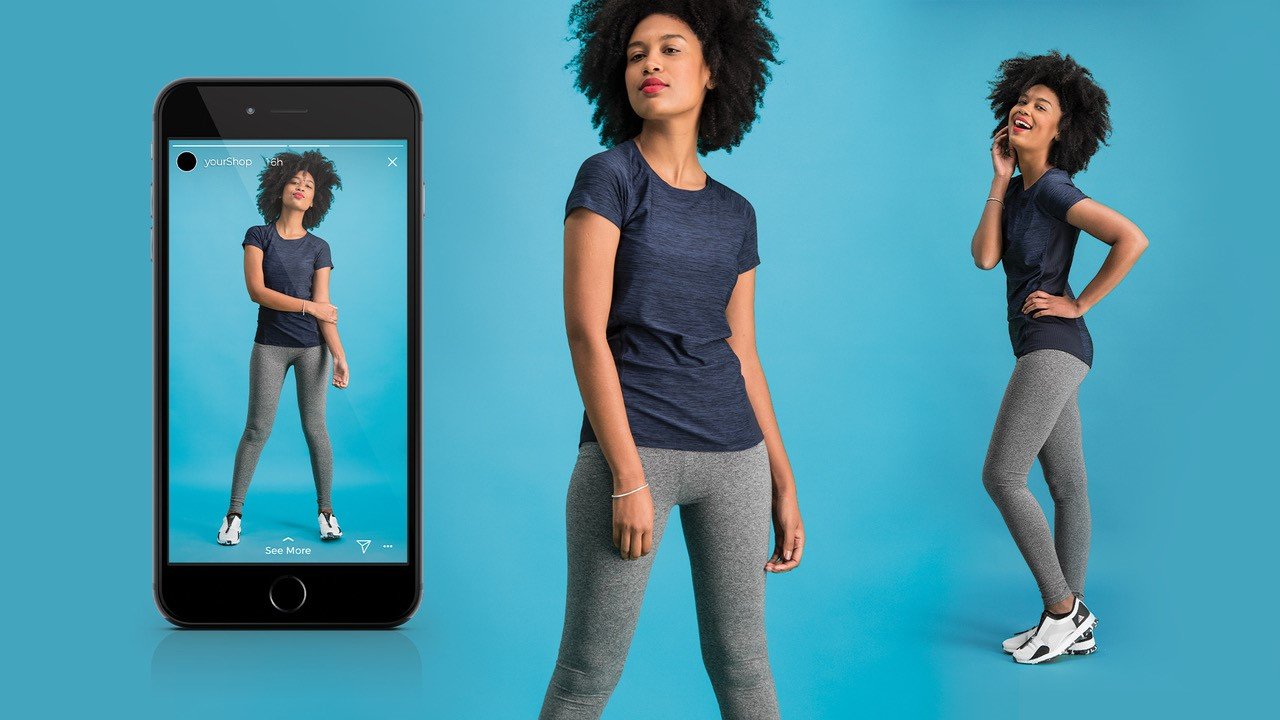8 Things to know about e-commerce photography in 2022
Published: Thursday, January 20, 2022
If businesses have learned anything from 2021, it’s that top-notch product shots are nonnegotiable. The way customers shop has changed forever - online retail is the new normal, making high-quality photos more important than ever before.

A single photo can make the difference between making and losing a sale. There are multiple aspects to consider when integrating this into your e-commerce strategy - from 360-degree photography to products in motion, storytelling, search results rankings and more. Craig Bellingham, founder and CEO of Studio[K]irmack, who has overseen over 150 national retail campaigns, with a client list that includes Adidas, Puma, Engen, Pick n Pay Clothing, Hi-Tec and Cape Union Mart, among others, shares eight key points to keep in mind.
1. Your online photos need to recreate the in-store experience
Customers want to learn as much as possible about the products on offer before committing to a purchase. High-quality photos and descriptions can virtually replace the capacity to feel and touch a tangible good, filling in for lost senses in online shops. Research shows that nearly 80 percent of online shoppers crave a visual experience - they are unlikely to explore the “shelves” further if there are no photos. Retailers need to give customers what they want; and for maximum satisfaction, it’s recommended that you provide a number of photo options, video and 360-degree solutions if you are able to do so.
2. Video killed the still image star
Stills have been used to promote products for decades. Various trends and styles have changed the way these pictures have been taken over the years, but the essence has remained the same - until now. In recent years, we’ve seen a big shift to video. As technology has developed, video has become much more compact - expanding its usage on websites and social media. 73% of consumers are more likely to buy products after watching videos that show them in action. This is exciting because we know that people pay a lot more attention to video than they do to still images. Savvy brands have been taking advantage of these increased opportunities for exposure, which has had a domino effect on product photographers. It’s reasonable to expect the studio you hire to be well versed in videography, even if the degree that product shots require it may be limited. In fact, you could argue that this skill is now a basic requirement.
3. 360-degree photography is here to stay
Initially dismissed as a flash in the pan, 360-degree photography has become increasingly popular across the majority of social media platforms and is being integrated into many large e-commerce sites. It’s a trend that looks set to stick around, and more and more brands are trying to take advantage of it. Though 360-degree photography is still in its relative infancy, companies can - and should - learn how to implement it into their marketing strategies; this is something that the right e-commerce photography studio should be able to assist with.
4. Move it or lose it
Customers are bored of seeing the same types of images over and over again, especially when it comes to differentiating one brand from another. Seasoned strategists (and the studios they use) have found a few ways to overcome this catalogue fatigue - one being to capture products in motion. This doesn’t have to be the same as using video; it means creating the illusion of action and movement through a series of stills. Products in motion can be a great way to shake things up, so you might want to consider adding them to the mix.
5. Great photos will be shared (and might go viral)
Visual material is 40 times more likely to be shared on social media than other types of content. That means quality photos are essential if you want your product to go viral - for the right reasons, anyway. Visual signals trigger emotional responses - and, as we know, these can be powerful for a brand. If a customer likes one of the top product photos from your website, it’s likely to end up on social media, increasing both your visibility and potential sales. People post photos to their accounts, consult friends and family for advice before buying, and share their shopping experiences. If you want your photos to be shared, make sure they look professional.
6. Photos tell stories
Simply by selecting a well-placed, thoughtfully designed image, you can conjure up a feeling, dream or vision. Visitors to your website will “read” your photos and decide - in a split second - whether the rest of the material on the site is relevant to them or not. It all boils down to the stories your photos are telling; you may be able to bring a customer to your product online, but unless the images are appealing, and reinforce the narrative that they will benefit from the product (or service) in their lives, they will ditch the transaction and stop engaging with your brand, taking their interests elsewhere. While it’s true that well-crafted text can be very persuasive, strategically planned - and placed - visuals can go much further. Studies suggest that people recall 80 percent of what they see, compared to just 20 percent of what they read.
7. Product shots can reduce refund rates
Because “products look different in reality than in the photos”, over 20 percent of all items sold online will be refunded. This is another reason why you need to make sure you’ve got good-quality product shots on your e-store; it helps set realistic expectations for your customers about what the goods they are ordering are actually like. The right photos will alleviate doubts and concerns - the wrong ones will do the opposite.
8. Photos can help you rank higher in Google et al
Optimising your product shots for search engines is an excellent way to increase the number of people who are interested in your products. There are several easy ways to do this, including the following:
- Name your photos clearly and carefully. Images with names like IMG03.JPG are not helpful to Google or users. Choose terms that actually describe the image but keep the name short - long file names that are stuffed with keywords could have a negative effect on your search rankings.
- Add that alt text. Even if it seems like a time-consuming extra step, provide a brief description of the contents of the picture. Search engines rely heavily on alt text to parse images. Make it easier for them, and you might be rewarded.
- Check your page load times. If your images are too big, they could be slowing your site down. Slow loading times may mean lower rankings and missed purchases. JPEGs are the most-used file format for e-commerce, as they allow for high-quality previews without chewing up all the bandwidth.
Studio[K]irmack is an innovative high-tech production studio that enables e-commerce brands to produce best-in-class photography and digital content campaigns faster, easier and more cost-effectively. CEO Craig Bellingham is also an authorised agent for Orbitvu automated product photography solutions in South Africa.
